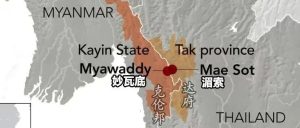III.GAN的构造和参数
利用GAN的能力有效的评估训练集包含的口令的概率分布。我们实验了一些参数。在这一部分,我们讲解GANs在具体构架和参数方面的选择。
我们通过Gulraiani团队的IWGAN(Improved training of Wasserstein GANs)[27]把PassGAN实例化。本论文中贯彻实施的IWGAN通过 ADAM优化器[34]尽量介绍训练误差,即,减少模块输出和训练数据之间的不匹配。
我们的模块用下面的超参数作为特征:
l Batch size,代表训练集包含的密码的数量,优化器的每一步中,训练集所含的密码都是通过GAN传播的。
l Number of iterations,它表示GAN调用前向传播和反向传播的次数[38],[37]。在每次迭代过程中,GAN运行一个生成器迭代器以及一个或多个鉴别器迭代器。
l Number of discriminator iterations per generator iteration,它表示生成器在每一个GAN迭代器中的迭代次数。
l Model dimensionality,它代表每个卷积层的维数(权重)。
l Gradient penalty coefficient(λ),它指定应用于鉴别器关于输入梯度的规范的惩罚[27]。添加这个参数会使GAN的训练更加稳定[27]。
l Output sequence length,它表示生成器生成的字符串的最大值(G以后)。
l Size of the input noise vector(seed),它决定生成一个样例,需要多少随机比特位作为G的输入。
l Maximum number of examples,它表示训练项目负荷的最大数量(在PassGAN中的密码)
l Adam optimizer’shyper-parameters:
n Learning rate,即,如何快速调整模型的权重。
n Coefficient β1,它指明梯度运行的平均衰减速率。
n Coefficient β2,它表明表明梯度平方的平均衰减率。
我们实例化了我们的模型,batch的大小是64。我们用不同的迭代次数训练GAN,最终会解决了199,000次迭代。随着匹配次数的增加,进一步的迭代会提供逐渐缩小的返回(详见IV部分的分析)。每个生成迭代器会把鉴别器的迭代次数设定到10,这个值是IWGAN的默认值。我们的实验使用层生成器和鉴别器的5个剩余层,深度神经网络中的每一层有128个维度。
我们把gradient penalty都设为10,还把GAN生成的序列长度从32个字符(IWGAN的默认长度)变为10个字符,从而可以匹配密码训练期间使用的的最大长度(详见IV-A部分)。GAN加载的最大实例的值被设定为整个训练数据集的大小。我们把噪声向量的大小设为128浮点数。
Adam优化器的系数β1和β2分别设为0.5和0.9,当学习率是10^-4时,这些参数就是Gulrajani团队的默认值[27]。
IV.评估
在这一部分,我们首先展示我们的训练和测试流程。然后,我们会对我们的实验结果进行报告,并把我们的实验中PassGAN的输出和通常用于JTR和HashCat的生成器规则进行比较。
我们的实验是利用IWGAN的TensorFlow实施的。我们用1.2.2版本的TensorFlow GPU,和1.2.12版本Python。所有的实验都是运行Ubuntu16.04.2LTS的工作台上执行的,该工作台具有64G RAM和12核2.0GHz英特尔Xeon CPU。以及NVIDA GeForce GTX 1080 Ti GPU。
A. GAN的训练和测试
要鉴定PassGAN的性能,并用它和最先进的密码生成规则做比较,首先,需要在RockYou泄露的一个大型密码集上对GAN,JTR和HashCat进行训练。进入这个数据集代表常见和复杂的密码的混合物,因为这些密码以明文形式存储在服务器上,因此他们都被恢复了。然后,我们会计算在两个独立的测试集中每一个工具生成的密码数量:一个RockYou的不同于训练集的子集,一个LinkedIn密码数据集[40]。
RockYou数据集包含332,603,388个密码。我们从大约3亿密码中选择所有长度小于等于10个字符的密码(29,599,680个密码,这些占据数据集得90.8%),并使用这些密码中的80%训练工具(总共23,679,744个密码,9,925,896个独特的密码)。我们用剩余的20%做测试(共5,919,936个密码,3,094,199个独特的密码)。
我们也会在LinkedIn数据集中所有的长度小于10 个字符的密码上测试每一个工具。这个数据集是由60,065,486个不同的密码组成的,因此,有43,354,871个不同的长度小于10个字节的密码(LinkedLn数据集中没有可用的频率计数)。LinkedIn的数据集中的密码可以作为哈希值,而不是明文。因此,LinkedIn数据集中只包含明文密码的工具,例如JTR和HashCat能够恢复。我们呈现在IV-B中的结果,表明用于恢复LinkecIn密码的规则和数据集基本上覆盖了用于这项工作的规则和数据集。
我们的研究和测试流程允许我们进行决定和相关测试:(1)在同样的密码分布中,PassGAN预测密码研究和测试工作做得有多好(如,把RockYou数据集用于训练和测试);(2)PassGAN能否概括整个密码的数据集。即,当PassGAN在RockYou数据集研究以及在LinkedIn数据集测试时,会观测它是如何表现的。
GAN的训练过程对输出的影响。训练GAN是一个迭代过程,由大量的迭代次数组成。随着迭代次数的增加,GAN从数据分布中学习到更多的信息。然而,增加步数也增加了过度拟合的可能性[23],[76].要评估密码数据的权衡,我们存储中间训练检查点并在每一个检查点生成10^8个密码。

图1:GAN生成的不重复的密码的个数,以及匹配到RockYou测试集的密码数量。X轴代表PassGAN的训练流程迭代次数的数量(检查点)。PassGAN在每一个检查点生成一个总量大约为10^8的密码。
图1表明在GAN的每一个检查点生成的唯一密码数,以及能与RockYou测试集中的内容匹配的密码数量。GAN生成的唯一样本数和迭代次数(检查点编号)几乎没有变化。然而,和测试集匹配的密码数量随着迭代数量稳步增长。这种增加会逐步减少至175.000~199,000次迭代,其中唯一密码的数量略有下降。该图指明迭代次数的进一步增加很可能导致过度拟合,从而降低GAN生成大量疑似密码的能力。因此,我们认为这种迭代范围对于我们的RockYou训练集而言是合适的。
REFERENCES
[1] M. Abadi, A. Chu, I. Goodfellow, H. B. McMahan, I.Mironov,K. Talwar, and L. Zhang, “Deep learning with differential privacy,” in Proceedingsof the 2016 ACM SIGSAC Conference on Computer and Communications Security. ACM,2016, pp. 308–318.
[2] A. Abdulkader, A. Lakshmiratan, and J. Zhang. (2016)Introducing deeptext: Facebook’s text understanding engine. [Online].Available:https://tinyurl.com/jj359dv
[3]M.Arjovsky,S.Chintala,andL.Bottou,“Wasserstein gan,”CoRR,vol.abs/1701.07875,2017.
[4] G. Ateniese, L. V. Mancini, A. Spognardi, A. Villani,D. Vitali, and G. Felici, “Hacking smart machines with smarter ones: How toextract meaningful data from machine learning classifiers,”International Journalof Security and Networks, vol. 10, no. 3, pp. 137–150, 2015.
[5] D. Berthelot, T. Schumm, and L. Metz, “Began:Boundary equilibriumgenerative adversarial networks,”arXiv preprint arXiv:1703.10717,2017.
[6] H. Bidgoli, “Handbook of information securitythreats,vulnerabilities,prevention, detection, and management volume3,” 2006.
[7] L. Breiman, “Random forests,”Machine learning, vol.45, no. 1, pp.5–32, 2001.
[8] N. Carlini and D. Wagner, “Defensive distillation isnot robust to adversarial examples,”arXiv preprint arXiv:1607.04311,2016.
[9] ——, “Adversarial examples are not easily detected:Bypassing tendetection methods,”arXiv preprint arXiv:1705.07263, 2017.
[10] C. Castelluccia, M. D̈urmuth,and D. Perito, “Adaptive password-strength meters from markov models.” In NDSS,2012.
[11] X. Chen, Y. Duan, R. Houthooft, J. Schulman, I.Sutskever, and P. Abbeel, “Infogan: Interpretable representationlearning by information maximizing generative adversarial nets,” in Advancesin Neural Information Processing Systems, 2016, pp. 2172–2180.
[12] R. Collobert, J. Weston, L. Bottou, M. Karlen, K.Kavukcuoglu, and P. Kuksa, “Natural language processing (almost) from scratch,”Journal of Machine Learning Research, vol. 12, no. Aug,pp. 2493–2537, 2011.
[13] A. A. Cruz-Roa, J. E. A. Ovalle, A. Madabhushi, andF. A. G.Osorio, “A deep learning architecture for imagerepresentation, visual interpretability and automated basal-cell carcinomacancer detection,” in International Conference on Medical Image Computing and Computer-AssistedIntervention. Springer Berlin Heidelberg, 2013, pp. 403–410.
[14] M. Dell’Amico, P. Michiardi, and Y. Roudier,“Password strength: An empirical analysis,” in INFOCOM, 2010 ProceedingsIEEE.IEEE,2010, pp. 1–9.
[15] E. L. Denton, S. Chintala, R. Fergus et al., “Deepgenerative image models using a? laplacian pyramid of adversarial networks,” in Advances in neural information processing systems, 2015,pp. 1486–1494.
[16] J. Donahue, L. A. Hendricks, S. Guadarrama, M.Rohrbach, S. Venugopalan, K. Saenko, and T. Darrell, “Long-term recurrent convolutionalnetworks for visual recognition and description,”2015 IEEE Conference onComputer Vision and Pattern Recognition (CVPR), pp. 2625–2634,2015.
[17] B. Duc, S. Fischer, and J. Bigun, “Face authenticationwith gabor information on deformable graphs,”IEEE Transactions on ImageProcessing,vol. 8, no. 4, pp. 504–516, 1999.
[18] M. D̈urmuth, F.Angelstorf, C. Castelluccia, D. Perito, and C. Abdelberi,“Omen: Faster passwordguessing using an ordered markov enumerator.” In ESSoS. Springer, 2015, pp.119–132.
[19] R. Fakoor, F. Ladhak, A. Nazi, and M. Huber, “Usingdeep learning to enhance cancer diagnosis and classification,” in The 30th International Conference on Machine Learning(ICML 2013),WHEALTH workshop,2013.
[20] S. Fiegerman. (2017) Yahoo says 500 million accountsstolen.[Online].Available:http://money.cnn.com/2016/09/22/technology/yahoo-data-breach/index.html
[21] M. Frank, R. Biedert, E. Ma, I. Martinovic, and D.Song, “Touchalytics:On the applicability of touchscreen input as a behavioralbiometric for continuous authentication,”IEEE transactions on informationforensics and security, vol. 8, no. 1, pp. 136–148, 2013.
[22] M. Fredrikson, S. Jha, and T. Ristenpart, “Modelinversion attacks that exploit confidence information and basiccountermeasures,” in Proceedings of the 22nd ACM SIGSAC Conference on Computerand Communications Security. ACM, 2015, pp. 1322–1333.
[23] I. Goodfellow, J. Pouget-Abadie, M. Mirza, B. Xu, D.Warde-Farley,S. Ozair, A. Courville, and Y. Bengio, “Generativeadversarial nets,” in Advances in neural information processing systems, 2014, pp. 2672–2680.
[24] Google DeepMind. (2016) Alphago, the first computerprogram to ever beat a professional player at the game ofGO.[Online].Available:https://deepmind.com/alpha-go
[25] A. Graves, “Generating sequences with recurrentneural networks,”arXiv preprint arXiv:1308.0850, 2013.
[26] A. Graves, A.-r. Mohamed, and G. Hinton, “Speechrecognition with deep recurrent neural networks,” in 2013 IEEE internationalconference on acoustics, speech and signal processing.IEEE, 2013, pp.6645–6649.
[27] I. Gulrajani, F. Ahmed, M. Arjovsky, V. Dumoulin,and A. C. Courville,“Improved training of wasserstein gans,”CoRR, vol. abs/1704.00028,2017.
[28] HashCat. (2017). [Online]. Available:https://hashcat.net
[29] J. Hayes, L. Melis, G. Danezis, and E. D.Cristofaro, “LOGAN: Evaluating privacy leakage of generative models usinggenerative adversarial networks,”CoRR, vol. abs/1705.07663, 2017.
[30] W. He, J. Wei, X. Chen, N. Carlini, and D. Song,“Adversarial example defenses: Ensembles of weak defenses are not strong,”arXivpreprint arXiv:1706.04701, 2017.
[31] B. Hitaj, G. Ateniese, and F. Perez-Cruz, “Deepmodels under the GAN:Information leakage from collaborative deeplearning,”CCS’17, 2017.
[32] P. G. Kelley, S. Komanduri, M. L. Mazurek, R. Shay,T. Vidas, L. Bauer,N. Christin, L. F. Cranor, and J. Lopez, “Guess again (andagain and again): Measuring password strength by simulating password-cracking algorithms,”in Security and Privacy (SP), 2012 IEEE Symposium on.IEEE, 2012, pp. 523–537.
[33] T. Kim, M. Cha, H. Kim, J. Lee, and J. Kim,“Learning to discover cross-domain relations with generative adversarialnetworks,”arXiv preprint arXiv:1703.05192, 2017.
[34] D. Kingma and J. Ba, “Adam: A method for stochastic optimization,”arXivpreprint arXiv:1412.6980, 2014.
[35] J. Kos and D. Song, “Delving into adversarialattacks on deep policies,”arXiv preprint arXiv:1705.06452, 2017.
[36] M. Lai, “Giraffe: Using deep reinforcement learningto play chess,”arXiv preprint arXiv:1509.01549, 2015.
[37] Y. LeCun, B. Boser, J. Denker, D. Henderson, R.Howard, W. Hubbard,and L. Jackel, “Handwritten digit recognition with aback-propagation network,” in Advances in neural information processing systems2, NIPS 1989. Morgan Kaufmann Publishers, 1990, pp. 396–404.
[38] Y. LeCun, B. Boser, J. S. Denker, D. Henderson, R.E. Howard,W. Hubbard, and L. D. Jackel, “Backpropagation applied tohandwritten zip code recognition,”Neural computation, vol. 1, no. 4, pp.541–551,1989.
[39] Y. LeCun, K. Kavukcuoglu, C. Farabet et al.,“Convolutional networks and applications in vision.” In ISCAS, 2010, pp.253–256.
[40]LinkedIn.Linkedin.[Online].Available:https://hashes.org/public.php
[41] Y. Liu, X. Chen, C. Liu, and D. Song, “Delving intotransfer-
able adversarial examples and black-box attacks,”arXivpreprint arXiv:1611.02770, 2016.
[42] J. Ma, W. Yang, M. Luo, and N. Li, “A study ofprobabilistic password models,” in Security and Privacy (SP), 2014 IEEESymposium on.IEEE, 2014, pp. 689–704.
[43] P. McDaniel, N. Papernot, and Z. B. Celik, “Machinelearning in
adversarial settings,”IEEE Security & Privacy, vol.14, no. 3, pp. 68-72, 2016.
[44] W. Melicher, B. Ur, S. M. Segreti, S. Komanduri, L.Bauer,N. Christin, and L. F. Cranor, “Fast, lean, and accurate:Modeling password guessability using neural networks,” in 25thUSENIX Security Symposium (USENIX Security 16). Austin, TX: USENIXAssociation,2016, pp. 175–191. [Online]. Available:https://www.usenix.org/conference/usenixsecurity16/technical-sessions/presentation/melicher
[45] C. Metz. (2016) Google’s GO victory is just aglimpse of how powerful ai will be. [Online]. Available:https://tinyurl.com/l6ddhg9
[46] M. Mirza and S. Osindero, “Conditional generativeadversarial nets,”arXiv preprint arXiv:1411.1784, 2014.
[47] V. Mnih, K. Kavukcuoglu, D. Silver, A. Graves, I.Antonoglou, D. Wierstra, and M. A. Riedmiller, “Playing atari with deepreinforcement learning,”CoRR, vol. abs/1312.5602, 2013.
[48] R. Morris and K. Thompson, “Password security: Acase history,”Communications of the ACM, vol. 22, no. 11, pp. 594–597,1979.
[49] A. Narayanan and V. Shmatikov, “Fast dictionaryattacks on passwords using time-space tradeoff,” in Proceedings of the 12th ACMconference on Computer and communications security. ACM, 2005, pp. 364–372.
[50] Y. Pan, T. Mei, T. Yao, H. Li, and Y. Rui, “Jointlymodeling embedding and translation to bridge video and language,”2016 IEEEConference on Computer Vision and Pattern Recognition (CVPR), pp.4594–4602,2016.
[51] N.Papernot,P. McDaniel,and I.Goodfellow, “Transferabilityin machine learning: from phenomena to black-box attacks using adversarial samples,”arXivpreprint arXiv:1605.07277, 2016.
[52] N.Papernot,P.McDaniel,S. Jha,M.Fredrikson,Z.B.Celik, and A. Swami, “The limitations of deep learning in adversarial settings,”InProceedings of the 1st IEEE European Symposium on Security andPrivacy, 2015.
[53] N. Papernot, P. McDaniel, X. Wu, S. Jha, and A.Swami, “Distillation as a defense to adversarial perturbations against deepneural networks,” in Proceedings of the 37th IEEE Symposium on Security andPrivacy,2015.
[54] C. Percival and S. Josefsson, “The scryptpassword-based keyderivation function,” Tech. Rep., 2016.
[55] S.Perez.(2017)Google plans to bring password-freelogins to android apps by year-end.
[Online].Available:https://techcrunch.com/2016/05/23/google-plans-to-bring-password-free-logins-to-android-apps-by-year-end/
[56] H.P.Position Markov Chains.(2017).[Online].Available:https://www.trustwave.com/Resources/SpiderLabs-Blog/Hashcat-Per-Position-Markov-Chains/
[57]T.P.Project.(2017).[Online].Available:http://thepasswordproject.com/leakedpasswordlists and dictionaries
[58] N. Provos and D. Mazieres, “Bcrypt algorithm,” inUSENIX, 1999.
[59] A. Radford, L. Metz, and S. Chintala, “Unsupervisedrepresentation learning with deepconvolutional generative adversarial networks,” in 4th International Conferenceon Learning Representations, 2016.
[60] C. E. Rasmussen and C. K. Williams,Gaussianprocesses for machine learning.MIT press Cambridge, 2006, vol. 1.
[61]RockYou.(2010)Rockyou.[Online]. Available: http://downloads.skullsecurity.org/passwords/rockyou.txt.bz2
[62]H.Rules.(2017).[Online].Available:https://github.com/hashcat/hashcat/tree/master/rules
[63] J. T. R. K. Rules. (2017). [Online]. Available:http://contest-2010.korelogic.com/rules.html
[64] B. Sch ̈olkopf andA. J. Smola,Learning with kernels: support vector machines, regularization,optimization, and beyond. MIT press, 2002.
[65] R. Shokri and V. Shmatikov, “Privacy-preserving deeplearning,” in Proceedings of the 22nd ACM SIGSAC conference on computer andcommunications security. ACM, 2015, pp. 1310–1321.
[66] R. Shokri, M. Stronati, C. Song, and V. Shmatikov,“Membership inference attacks against machine learning models,” in Security andPrivacy (SP), 2017 IEEE Symposium on. IEEE, 2017, pp. 3–18.
[67] Z. Sitov ́a, J.ˇSedˇenka, Q. Yang, G. Peng, G. Zhou,P. Gasti, and K. S.Balagani, “Hmog: New behavioral biometric features forcontinuous authentication of smartphone users,”IEEE Transactions on InformationForensics and Security, vol. 11, no. 5, pp. 877–892, 2016.
[68] T. SPIDERLABS. (2012) Korelogic-rules. [Online].Available:https://github.com/SpiderLabs/KoreLogic-Rules
[69] I. Sutskever, J. Martens, and G. E. Hinton,“Generating text with recurrent neural networks,” inProceedings of the 28th InternationalConference on Machine Learning (ICML-11), 2011, pp. 1017–1024.
[70] Y. Taigman, M. Yang, M. Ranzato,and L. Wolf,“Deepface:Closing the gap to human-level performance in face verification,”InProceedings of the 2014 IEEE Conference on Computer Vision and Pattern Recognition, ser. CVPR ’14.Washington, DC, USA:IEEEComputer Society, 2014, pp. 1701–1708.[Online]. Available:http://dx.doi.org/10.1109/CVPR.2014.220
[71] J. the Ripper. (2017). [Online].Available:http://www.openwall.com/john/
[72] J. the Ripper Markov Generator.(2017). [Online].Available:http://openwall.info/wiki/john/markov
[73] I. Tolstikhin, S. Gelly, O. Bousquet, C.-J.Simon-Gabriel, andB. Sch ̈olkopf,“Adagan: Boosting generative models,”arXiv preprint arXiv:1701.02386, 2017.
[74] F. Tram`er, F. Zhang, A. Juels, M. K. Reiter, and T.Ristenpart, “Stealingmachine learning models via prediction apis.” In USENIX,2016.
[75] M. Weir, S. Aggarwal, B. De Medeiros, and B. Glodek,“Password cracking using probabilistic context-free grammars,” in Security andPrivacy, 2009 30th IEEESymposium on. IEEE, 2009, pp. 391–405.
[76] Y. Wu, Y. Burda, R. Salakhutdinov, and R. Grosse,“On the quantitative analysis ofdecoder-based generative models,”arXiv preprint arXiv:1611.04273, 2016.
[77] V. Zantedeschi, M.-I. Nicolae, and A. Rawat,“Efficient defenses against adversarial attacks,”arXiv preprintarXiv:1707.06728, 2017.
[78] H. Zhang, T. Xu, H. Li, S. Zhang, X. Huang, X. Wang,and D. Metaxas,
“Stackgan: Text to photo-realistic image synthesis withstacked generative adversarial networks,”arXiv preprint arXiv:1612.03242, 2016.
[79] X. Zhang and Y. A. LeCun, “Text understanding fromscratch,”arXiv preprint arXiv:1502.01710v5, 2016.
[80] Y. Zhong, Y. Deng, and A. K. Jain, “Keystrokedynamics for ser uthentication,”in Computer Vision and Pattern RecognitionWorkshops (CVPRW), 2012 IEEE Computer Society Conference on. IEEE, 2012,pp.117–123.
*本文参考:PassGAN: A Deep Learning Approach for Password Guessing,丁牛网安实验室小编EVA编辑,如需转载请标明出处。
来源:freebuf.com 2018-03-13 11:24:40 by: DigApis





















请登录后发表评论
注册